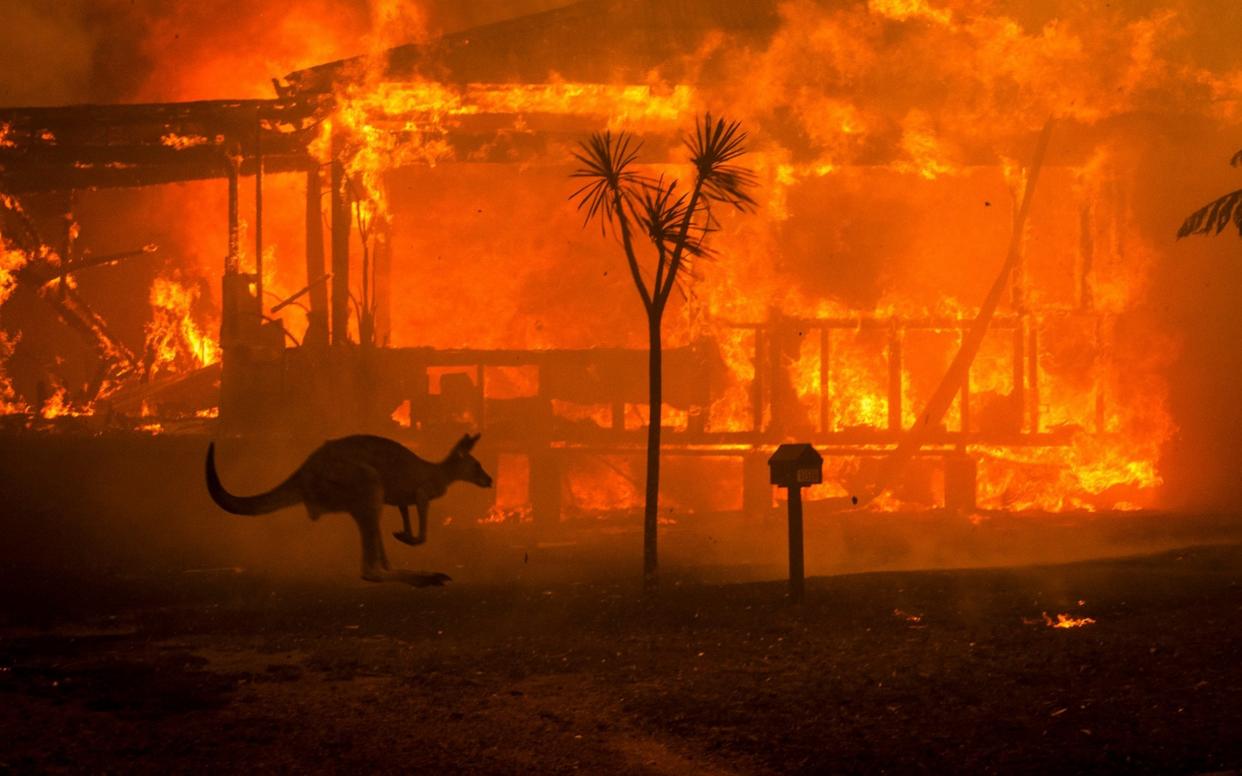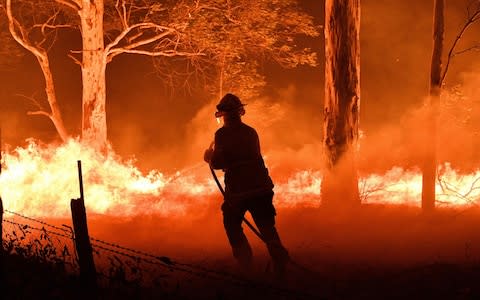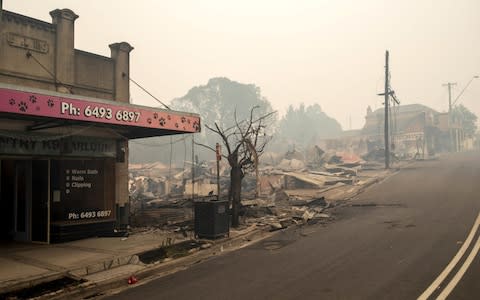Australian bushfires: Military deployed to help devastated communities as death toll rises

Australia deployed ships and helicopters on Wednesday to help towns devastated by bushfires that have left at least 17 people dead nationwide and destroyed more than 1,200 homes.
At least seven people have died this week in New South Wales as fires rage across Australia. Another two people are missing.
Record high temperatures and months of drought have created catastrophic conditions, with New South Wales, Queensland, South Australia and Victoria hit particularly hard.
In New South Wales tens of thousands of people are without power or communications after around 120 fires ripped through electricity infrastructure, phone lines and mobile towers.
In Bateman Bay at least 31,000 people have been affected. Neil Pharaoh, whose mother lives in Bateman Bay, said: “There is no power, no mobile, no internet or utilities, the town is out of fuel and food, and no open roads to get in or out.”
“The water catchment for the bay has all been burnt… Residents are all worried about sewerage which is expected to start overflowing shortly without the pumping stations, and running out of tap water shortly,” he wrote.
In Mallacoota, Victoria, four thousand people were trapped on the beach after flames encircled the town. On Wednesday, helicopters were used to fly firefighters in and out of the area for shift changes after battling around the clock to save the town, and police boats brought drinking water and other vital supplies to those stranded.
Andrew Crisp, Victoria's emergency management commissioner, said the 176-metre-long HMAS Choules may be used to evacuate many of those stranded in Mallacoota, though with a capacity of 1,000 it will be insufficient alone. HMAS Choules is due to arrive on Thursday.

Gladys Berejiklian, NSW premier, said authorities were working to restore communications with areas cut off by the fires, though she warned conditions will deteriorate again over the weekend. "Weather conditions on Saturday will be as bad as they were" on Tuesday, Ms Berejiklian told reporters in Sydney.
Staff at a small zoo in New South Wales defied an evacuation order so they could protect the 200 animals from harm, relocating some animals to a keeper's home.
Chad Staples, director of Mogo Zoo, said on Wednesday that the situation had been “apocalyptic… (it) felt like Armageddon”.
“Right now in my house there's animals of all descriptions in all the different rooms, that are there safe and protected... not a single animal lost," he told the Australian Broadcasting Corporation.
Australia's capital Canberra was shrouded in thick smoke on Wednesday, reaching about 20 times hazardous levels, prompting health warnings.
In Lake Macquarie, in eastern New South Wales, Luke Pearson, his partner and their three children were forced to flee their home on Wednesday.
Mr Pearson told the Daily Telegraph that the family had just moved in to their house six weeks ago, but once three of the four roads in and out of the area were cut off by fire, they had no choice but to evacuate.
“We have the fire app, it beeps whenever a fire gets within 25km. We looked and it said three of the four roads were already down, and we could see the smoke billowing,” he said.

“The warning said to keep an eye out of embers and spot fires… We packed up and left… Our middle child has asthma and we have already had a few smoky days in the past couple of months,” he said.
The family fled to stay with relatives around 40km away.
Elsewhere in the Lake Macquarie region, Miriam Basset and her family were keeping alert and prepared for the worst late on Wednesday. “We are still being vigilant. We live on the corner of a farm, surrounded by grass,” she said.
“We are keeping an eye out for to make sure there are no spot fires. We have smoke all around us.”
Smoke from Australia in Queenstown, New Zealand. Today vs yesterday. pic.twitter.com/laBw9bHJMQ
— ��������var = Jason Thompson (@Agent_Jase) December 31, 2019
Ms Basset said her family had fire hoses and two generators ready, and “buckets of water around the place”, and had removed as much flammable material from the house as possible.
“The adrenaline pushing you along … The people fighting last night to defend their properties, I can only imagine how exhausted they are,” she said.
Ms Basset said a friend witnessed his neighbour having to drive her car through flames to escape her property. “She couldn’t get out because burning trees fell across her driveway so she had to drive through a paddock downhill, with her lights on because of the smoke. There were flames leaping up around her car as she drove,” she said.
The woman was able to escape to the nearest evacuation centre.
“Being surrounded by fire, the intensity of the heat, the sheer ferocity of it really struck us, it has been immense,” she said.

